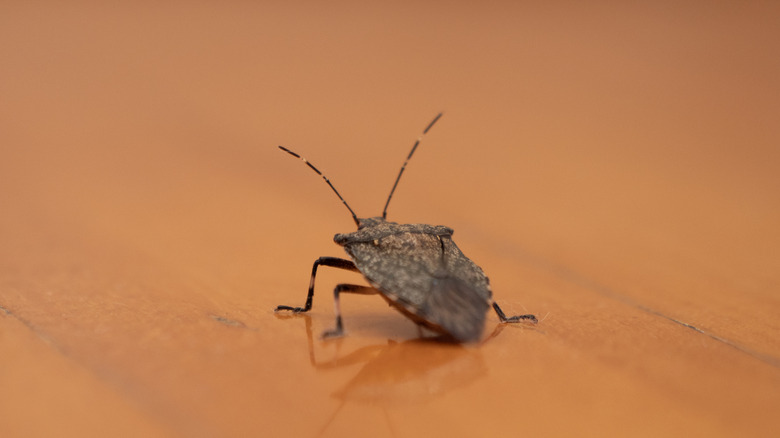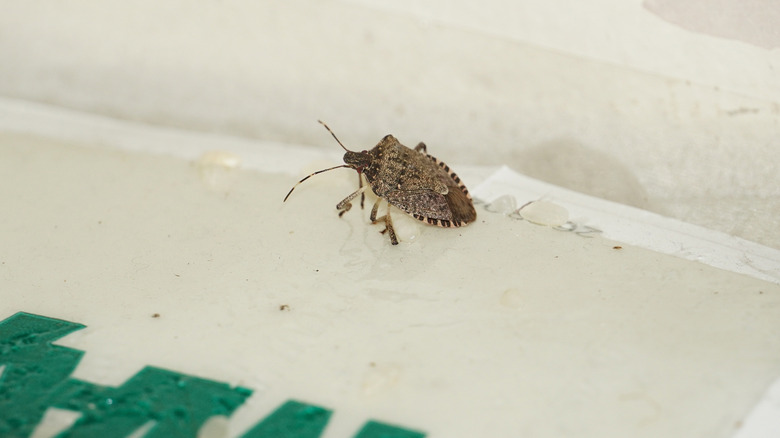The Science Behind Why Stink Bugs Smell So Gross
We may receive a commission on purchases made from links.
Flying insects are some of the most annoying bugs to get into your house with how they buzz around your head and face and land in your coffee cup. Your first reaction might be to grab the fly swatter and put them out of your misery. While that's understandable and works well with a common housefly, it's a different story for stink bugs because of the gross smell they leave behind.
Among the fun facts about stink bugs, there are more than 200 species in North America and their nickname comes from the disgustingly scented secretion released from the metathoracic glands (MTGs) on their abdomen when they feel threatened. This fluid was studied in a variety of tests on the species Cosmopepla bimaculata, the results of which were published in the Journal of Chemical Ecology. The paper describes stink bugs having two MTGs and controlling whether they discharge the foul-smelling secretion from the left or right one, as well as from both at the same time. Additionally, the insects can control how much fluid comes out and resorb it into their reservoir afterward.
The researchers discovered that 67% of it contained tridecane — an oily liquid of clear yellow color that has a hydrocarbon odor, can cause irritation or redness with prolonged skin exposure, and is flammable. Also, about 12% of it contained decenal — a compound that's also prominent in cilantro. The collective odorous components in the fluid can drive away predatory animals that eat stink bugs — such as anole lizards, killdeer, robins, and starlings. Unfortunately, the secretion can make an entire space smell bad when you squash it, too.
How to get rid of stink bugs to avoid making your home smell foul
During fall, stink bugs look for places to hide during the winter. The most common place is underneath tree bark, but they can also get into your home through cracks around baseboards, doors, and windows, as well as ceiling lights, exhaust fans, and utility pipes. You might see them as they enter or when they emerge from hiding in the spring or early summer. If you squash them, though, the smell from the fluid that they discharge can linger for hours. An alternative recommended by some websites online is sweeping or vacuuming them up, but the secretion still comes out and makes the broom or vacuum smell bad for a while. While getting these insects isn't as hands off as banishing flies from your home naturally with essential oils, it's still possible to do it without putting your nose at risk.
NC State University entomologist Matt Bertone recommends, "If only a few are present, they can be disposed of by hand or using a small container to trap them." Sticky traps — like Catchmaster glue boards — can also work, but Virginia Tech had better results with a homemade soapy-water trap than with store-bought traps. Just pour some water into the bottom of a disposable foil roasting pan, mix in some dish soap, and shine a desk lamp into it. After leaving it in a dark area for about 12 hours, you'll see dead stink bugs in the mixture because the soap prevents them from escaping. To keep more of these insects from infiltrating your house, seal all of the openings where they can enter with caulk or weather stripping.

